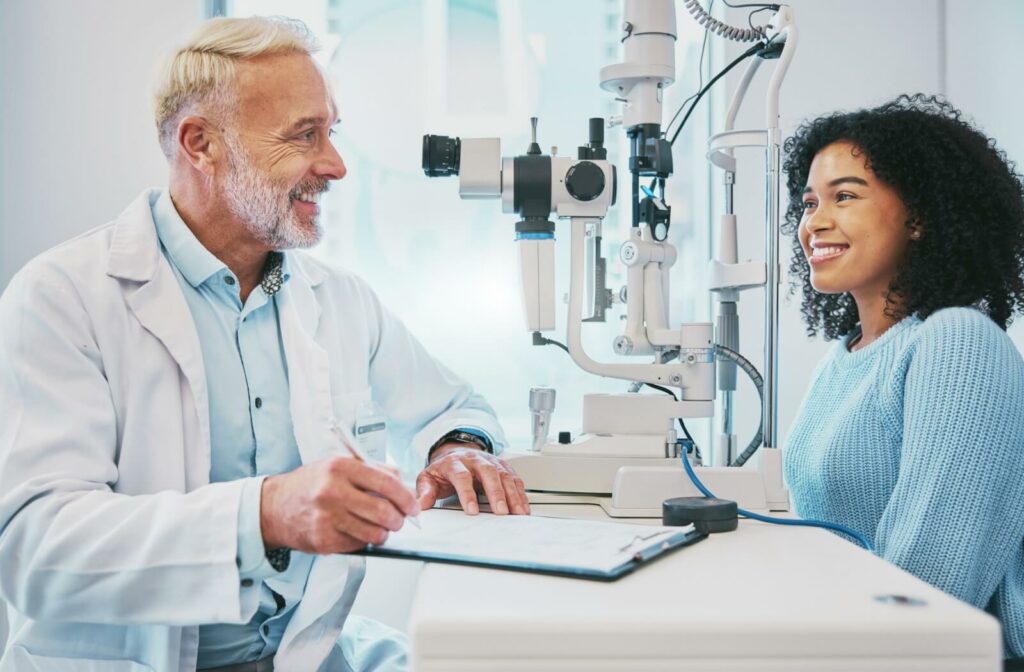All Categories
Featured
Table of Contents

Routine eye evaluations are necessary for maintaining great vision and identifying possible eye health and wellness problems early. The frequency of these examinations can vary considerably based on an individual's age, way of life, and overall health. Recognizing the advised schedule for eye tests can help guarantee that people of any ages receive proper care and surveillance for their eye wellness.
Infants and Toddlers (0-2 Years)
For kids and babies, eye tests are essential for spotting any prospective vision problems beforehand. The American Academy of Ophthalmology suggests that a child's very first eye exam must happen at around 6 months of age. Throughout this preliminary check out, the eye treatment expert will certainly evaluate the kid's aesthetic growth and check for any evident eye concerns.Following this first test, it is suggested that kids have another eye test at age 3. This see will concentrate on evaluating the youngster's general aesthetic feature, consisting of eye alignment and the capacity to track objects. If no issues are found, the following test must be set up before the child starts school, usually around age five or 6.
School-Aged Kids (6-18 Years)
Once children get to school-age child, normal eye exams should be set up every one to two years. Vision is important for discovering and growth, and numerous institutions conduct vision testings. These testings do not change a detailed eye test by an eye treatment expert.For youngsters involved in activities or sporting activities needing considerable visual focus, annual eye exams might be suggested. Additionally, if a youngster displays indicators of vision issues-- such as problem reading, scrunching up your eyes, or regular migraines-- a see to the eye doctor should be arranged as quickly as feasible.
Young Person (19-39 Years)
Young adults commonly have less vision changes than older age teams, but routine eye examinations continue to be crucial. The general referral is to schedule an eye examination every 2 years throughout this period. Nevertheless, people with certain danger elements-- such as a household background of eye condition, diabetic issues, or those who use get in touch with lenses-- ought to think about yearly eye tests.Furthermore, those who spend substantial time on electronic tools may experience electronic eye stress. If signs and symptoms such as dryness, exhaustion, or blurred vision happen, it may be smart to see an eye treatment specialist sooner.
Adults (40-64 Years)
As individuals get in midlife, the probability of developing vision issues boosts. Adults aged 40 to 64 need to set up eye examinations every one to two years. This age might start to experience presbyopia, an all-natural age-related problem that makes it testing to concentrate on close objects. Eye exams can additionally aid identify other usual age-related conditions such as glaucoma, cataracts, and macular degeneration.If people in this age group have threat elements such as high blood pressure or diabetes mellitus, they may require even more frequent exams to check their eye wellness closely.
Senior Citizens (65 Years and Older)
For seniors, regular eye examinations end up being much more important. The American Optometric Association advises that individuals matured 65 and older have an eye test a minimum of once a year. Older grownups are at a greater risk for numerous eye conditions, consisting of cataracts, glaucoma, and age-related macular degeneration. Early discovery and therapy of these conditions can avoid vision loss and boost the lifestyle.Verdict.
Comprehending the suitable schedule for eye tests based on age is crucial for keeping optimal eye health and wellness throughout life. By sticking to these guidelines and consulting with an eye care professional, individuals can take aggressive steps toward maintaining their vision and total wellness.Table of Contents
Latest Posts
Experience WyHy FCU – Top Benefits for Your Future
Published May 26, 25
1 min read
Experience Your Financial Partner at WyHy – Essential Perks for Your Financial Success
Published May 26, 25
1 min read
Uncover the Leading Auto Repair Coupons in Montclare, Chicago
Published May 24, 25
1 min read
More
Latest Posts
Experience WyHy FCU – Top Benefits for Your Future
Published May 26, 25
1 min read
Experience Your Financial Partner at WyHy – Essential Perks for Your Financial Success
Published May 26, 25
1 min read
Uncover the Leading Auto Repair Coupons in Montclare, Chicago
Published May 24, 25
1 min read